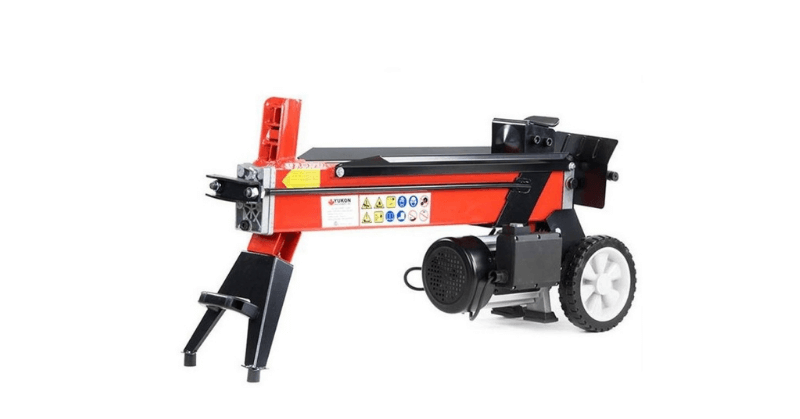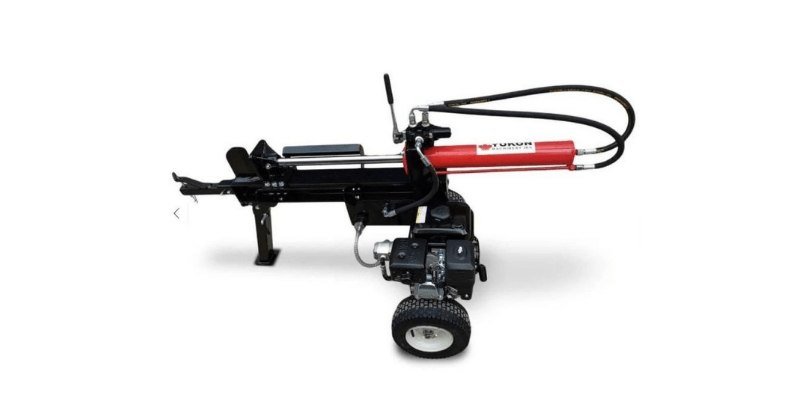All Categories
Buying a Log Splitter: The No-Nonsense Guide

Everyone loves a warm fire, but chopping wood? That's a whole different matter. On one hand, it brings a sense of pride - especially when you get a full stack ready for winter - but it also takes a lot of backbreaking work.
If you still have a pile of logs waiting to be split, give the old chopping stump a break and fire up a log splitter instead. These handy units will quickly break down logs, including dense hardwood depending on the model. With sizes ranging from small kindling splitters to commercial-quality units, there's a wood splitter out there for every home and property.
This guide covers everything you need to know about buying a log splitter, including types, sizes, splitting force (in tons) and other factors to consider. We'll also cover safety and maintenance tips to help you make the most of your investment.
Which log splitter type is right for me? Pros and cons
Log splitters in Australia range from simple, manual tools to commercial-quality, high-powered equipment. Most units have a hydraulic ram, which does the hard work of splitting wood. If you're not sure which type of log splitter to get, we've listed the pros and cons below:
Manual log splitters
This can mean one of two things: (1) a metal kindling splitter to be used with a mallet or (2) a manual splitter equipped with a hydraulic ram. To use the manual hydraulic splitter, you need to work the jack handles repeatedly - which can take a lot of time compared to splitting wood with an axe. This makes manual log splitters more suited to occasional use, such as breaking down wood for camping or a small firepit gathering.
Manual Log Splitter Pros:
- Ideal for small logs and kindling
- Safer alternative if you can't use a splitting maul
- No electricity or fuel required
- Can be used indoors or outdoors
Manual Log Splitter Cons:
- Time-consuming
- Requires a lot of strength to operate
- Can't split thick, dense wood
Electric hydraulic log splitters

These are the ideal solution for homes and small rural properties. Electric hydraulic models offer great performance and enough power for most firewood and kindling with splitting forces from 7 tons up to 12 tons (more on that later).
Pros:
- Can split logs up to 30cm thick
- Suitable for most homes and small properties
- No fumes - can be used in sheds and other closed spaces
- Can be used anywhere 240v power is available
- Lightweight and portable
Cons:
- Cannot be used in areas without power
- Should not be used outdoors in poor weather conditions
- Not suitable for massive logs or hardwoods (such as ironbark or redgum)
Petrol hydraulic log splitters

For large properties or light commercial work, petrol log splitters are a wise investment. They're more powerful than electric models, with splitting forces between 15 and 60 tons. If you are going with a large unit, make sure it has a towing coupler attached.
Pros:
- Designed to split logs up to 65cm thick (depending on the splitting force)
- Multiple sizes to choose from
- More powerful than electric wood splitters
- Top-end models can split dense hardwood
- Suitable for use anywhere outdoors, with no need for electricity
Cons:
- Produces fumes - should not be used indoors and in poorly ventilated areas
- Noisier than electric models
Diesel hydraulic log splitters

Similar to petrol log splitters, diesel models are suitable for heavy workloads and commercial work. They're a great alternative if diesel is more readily available to you than petrol.
Pros:
- More powerful than electric splitters
- Splits larger and harder species of firewood
- Suitable for use anywhere outdoors, with no need for electricity
Cons:
- Produces fumes - should not be used indoors and in poorly ventilated areas
- Noisier than electric models
- Fewer sizes compared to petrol models
Compare Log Splitters on Klika
Factors to consider when choosing a log splitter
Once you've decided on the type of log splitter to get (depending on the size and volume of logs you'll be splitting), you can narrow your choices by comparing these factors:
Splitting force
The peak pressure generated by the hydraulic ram. The higher the splitting force, the more powerful a unit is. Electric models have a splitting range of 7 to tons, while diesel and petrol models can reach up to a whopping 60 tons. Keep in mind that this is the peakforce - if you need a log splitter to consistently reach this force, you'll want to 'size up' instead.
Cycle time
The time it takes to split a log and return the head to its starting position. Cycle times range from 10 to 20 seconds, with more powerful models generally taking longer.
Splitting wedge
Also known as the splitting head. Most models come with a solid steel 2-way splitter for durability. This means you'll need to run a large log through the splitter multiple times if you need smaller pieces of firewood.
Portability
How easy the wood splitter can be moved around. Most hydraulic splitters come equipped with wheels, but you'll want to check if they're durable enough for your property. For heavy-duty splitters, you want to choose a model with a jockey wheel or towing coupler.
Two-way operation (for large splitters)
Can the splitter be operated horizontally and vertically? If you're working with large logs, a splitter with vertical operation will save you from repeated lifting.
Maintenance and work hours
All log splitters require some maintenance, but it shouldn't interfere with the performance. Find out what kind of maintenance the unit requires, how large the fuel tank is (for petrol and diesel models) and how many hours the splitter can run on a full tank.
Size
The actual size of the unit will affect your storage options. Ideally, you'll want to store the splitter somewhere safe and dry, such as a shed or garage. Make sure you have enough space on your property to store your new equipment.
Log splitter safety and maintenance
Protect yourself and your investment by using these safety precautions:
- Wear safety glasses at all times. Small pieces of wood can fly out from the splitter and cause serious injury.
- Do not wear loose clothing that can get caught in the machine.
- Wear work gloves and steel-toed boots to help prevent injuries caused by handling logs.
- Turn off the splitter before towing or repositioning it.
- Read the entire manual before operating the machine.
- Check the splitter for loose bolts, hoses and parts.
Additional precautions for petrol and diesel log splitters:
- Wear earmuffs to protect yourself from high noise levels.
- Check the fuel and hydraulic tank levels before every use.
- Do not operate the splitter on wet, slippery or muddy ground.
- Do not use petrol or diesel splitters indoors or in poorly ventilated areas.
Log splitter FAQs
How do I use a log splitter?
It depends on the model you own. For hydraulic log splitters, the steps are generally simple:
- Switch on the unit.
- Place the log on the working bed.
- Pull the handle and press the safety switch to activate the hydraulic ram. This will put pressure on the log and cause it to split.
- Wait until the ram has returned to its original position before retrieving the split firewood.
What size log splitter do I need in Australia?
When choosing a log splitter, the first thing you should consider isn't the size but rather the splitting force. This is the maximum amount of pressure that the hydraulic ram generates.
The best log splitter will largely depend on the species of wood, the logs' size and volume and whether they're green or seasoned. For example, an 8-ton splitter can easily handle dry, seasoned pine, while an 18-ton unit will struggle to split ironbark or redgum. That said, a 12-ton electric unit is often powerful enough for households and small properties.
Which hydraulic oil should I use for a log splitter?
Always use the hydraulic oil recommended by the manufacturer. This will help your machine run longer and more efficiently.
Where can I buy a log splitter?
You can buy log splitters online or from specialty distributors all over Australia. Shopping online lets you compare machines at a glance and saves you time spent driving around to check out different splitters. Choose a trusted distributor to ensure that you get the best quality for your purchase.
Find the best log splitter for your needs at Klika
Here at Klika, we offer a range of heavy-duty hydraulic splitters for backyard and commercial use. We ship electric, petrol and diesel log splitters all over Australia, helping our customers cut down on their winter preparation time.
See our Yukon log splitters in action below:
If you have any questions about our log splitters, don't hesitate to call us on 1300 458 283 or use the live chat option. Our friendly staff will be happy to help you find the best log splitter for your requirements.


